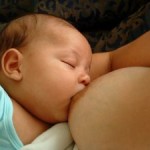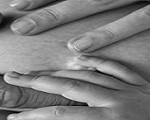You may be wondering why you should participate in childbirth classes with your partner when there is so much information available in books and online explaining the entire process of labour and birth. However, there are many pros to these classes, every pregnant woman is eligible to participate in them and most of them are […]
labour
Vasopressin
Vasopressin is a hormone that is very similar in both structure and function to oxytocin. It is released from the pituitary gland and does not increase until your third trimester of pregnancy. Vasopressin is an important hormone in the regulation of your contractions during labour and birth. As your labour progresses, your contractions will become […]

Relaxin
Relaxin is a protein hormone, which you are going to love in the delivery room! It is produced in your ovaries, breasts and placenta. The placenta accounts for the increase in your relaxin levels during pregnancy. Normally, relaxin levels peak in your body on day 14 of your menstrual cycle and drop again if your […]

Oxytocin
Oxytocin is another important hormone and though it is what causes those painful contractions during labour, you wouldn’t be able to hold your gorgeous baby without it. Oxytocin has an important role in conception, labour and breastfeeding. In conception, oxytocin is the hormone that is responsible for your sexual arousal and of course if you […]

Progesterone
Progesterone is a very important pregnancy hormone that is always at work in the female body, but during pregnancy its role becomes even more important. Progesterone is also known as the pro-pregnancy hormone, because without it your placenta and uterus cannot support your pregnancy. It has an important role not only during your pregnancy, but […]
Vernix caseosa
Vernix caseosa is the white, wax-like substance that covers the fetus in-utero and usually at birth. However, premature and overdue babies are not usually born covered in vernex caseosa, because premature babies would not yet have developed it and overdue babies would have already fully shed it. Vernix caseosa is primarily composed of sebum (skin […]
PROM
Premature rupture of the membranes, better known as PROM, is a condition in which your water breaks after 37 weeks of pregnancy, but labour does not begin for at least another hour. The membranes which rupture are the amniotic sac and its chorion, the same two membranes that normally rupture with the onset of labour. […]
External Cephalic Version (ECV)
An ECV or external cephalic version is one method used avoid a breech birth by turning the baby into the vertex position. It has a 58% success rate of doing so and is only performed after week 37 of pregnancy when the likelihood of your baby moving himself into the breech position drastically decreases. An […]
Breech births
Breech births are births in which your baby is born in the breech or bottom-down position, that means her bottom or feet will come out first instead of her head. About 25% of all babies will be in the breech position when their mother is 32 weeks pregnant, by week 40 of pregnancy only 3% […]
